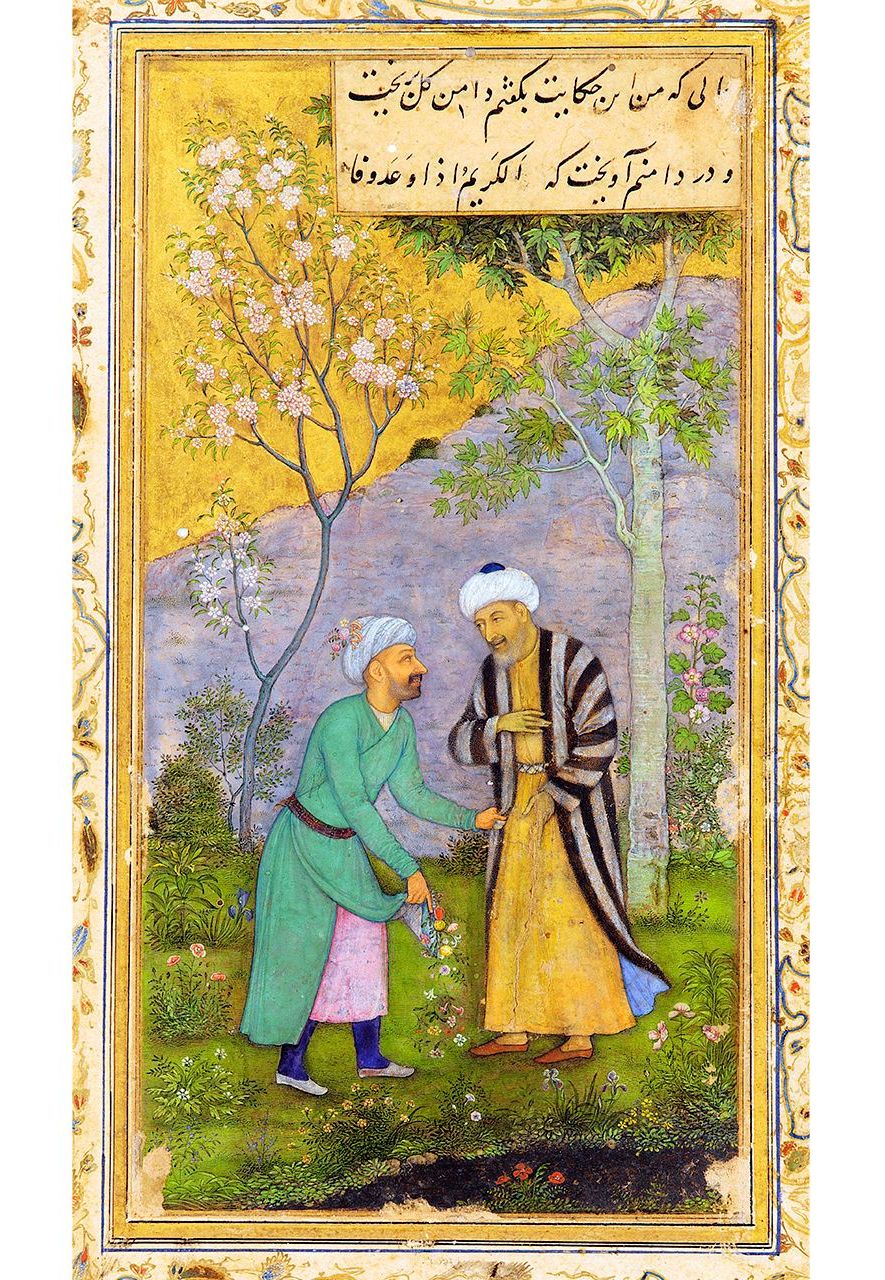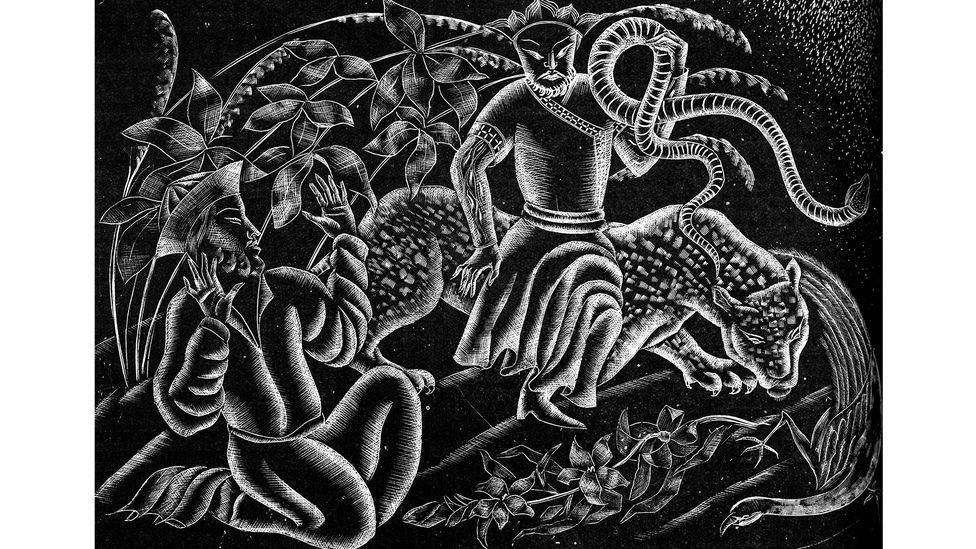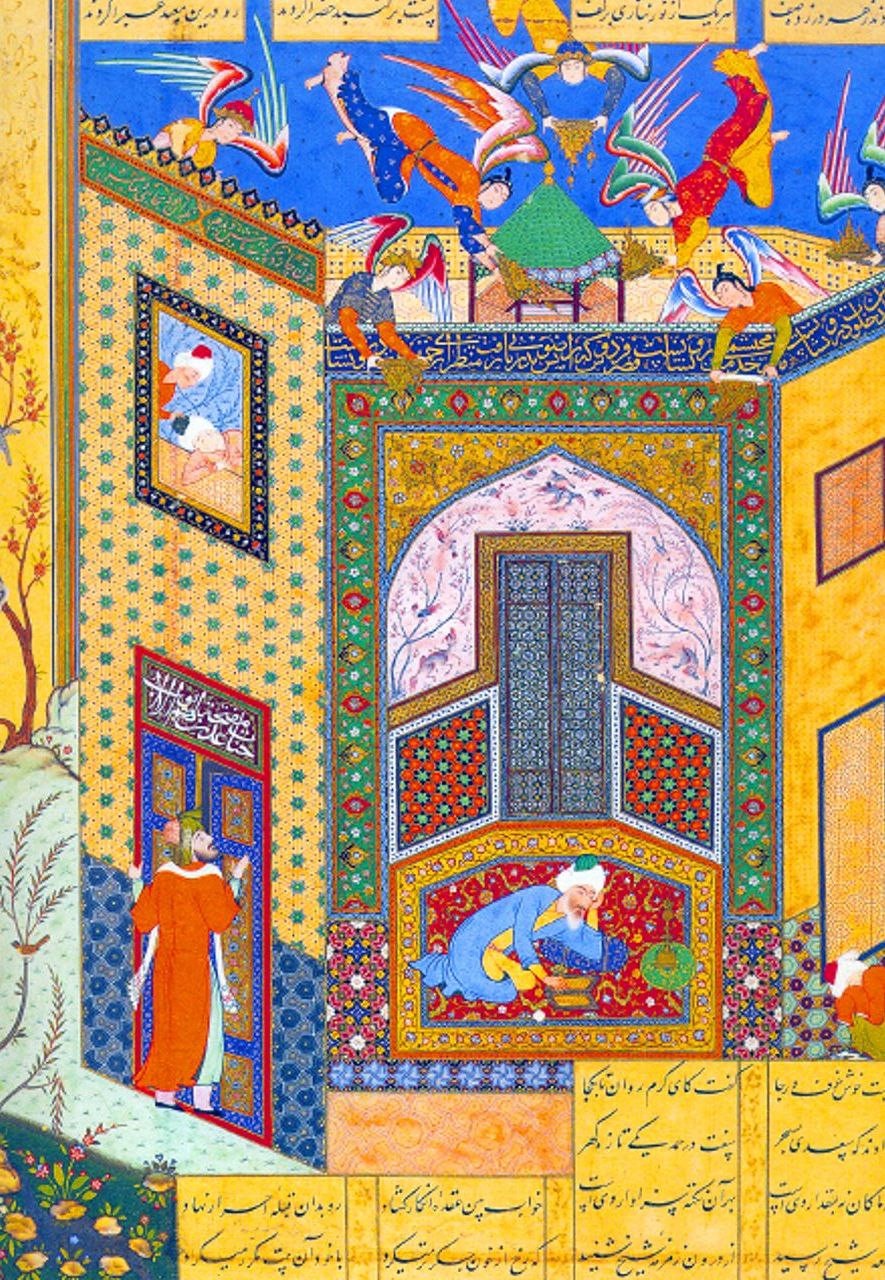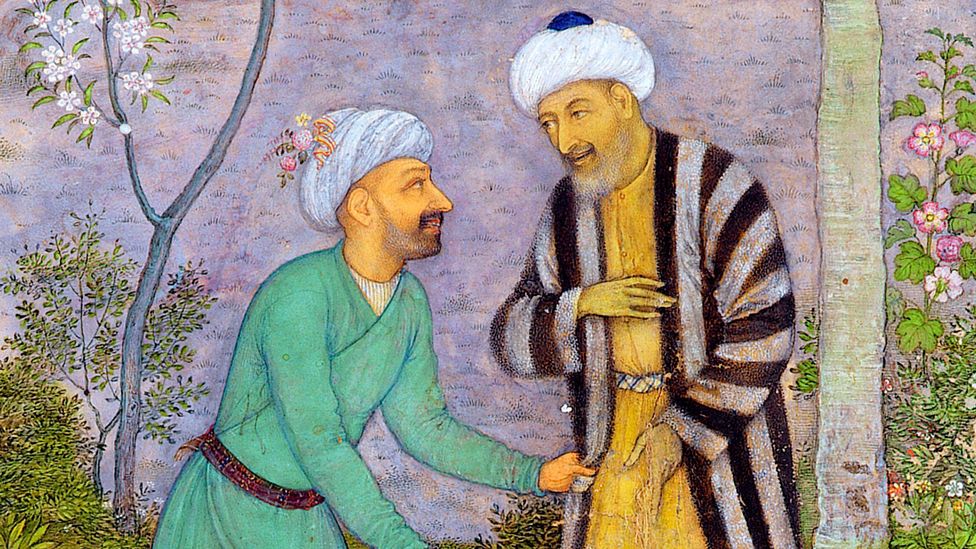Ο ποιητής Σααντί Σαραζί και ο Κήπος με τα Ρόδα
Sa’di’s remarkable poetry is perpetually modern and full of ‘benevolent
wisdom’ on how to live. Joobin Bekhrad revisits the life and work of
‘the cheerer of men’s hearts’.
I
In
the 13th Century AD, during one of the most turbulent periods in
Iranian history, the poet Sa’di left his native Shiraz to study in
Baghdad. From there, he went on to travel far and wide, and it was
around three decades before he returned home to his city of roses and
nightingales, which, thanks to the diplomacy of Shiraz’s occupying
Turkic rulers, had been spared the terror that the Mongols had unleashed
elsewhere in Iran.
Despite being an acclaimed poet in the region, Sa’di
felt he’d wasted his life so far and had said nothing of consequence,
and so resolved to spend the rest of it in silence. At the insistence of
a friend, however, he broke his vow, and, it being springtime in
Shiraz, the two went for a stroll in a paradise garden. Surprised that his friend should choose to gather flowers and herbs in his robes, Sa’di remarked in Khayyam-esque
fashion on the ephemerality of such things, and promised his friend
that, instead, he would write a book both enjoyable and educational
called the Golestan (Flower Garden), whose pages would last forever.
In spite of the inhumanity and terror surrounding him, Sa’di had faith and hope in mankind
The
poet kept his word – and was right. Together with the Bustan (Garden),
his other best-known book, the Golestan remains one of the most beloved
works of Persian literature many centuries on. “Created from one
essence, people are members of a single body,” Sa’di wrote in what today
is not only his most-quoted poem, but perhaps also the most famous poem
in the Persian-speaking world. “Should one member suffer pain, the rest
shall, too. You who feel no sorrow for the distress of others cannot be
called a human being.”
If
other medieval Persian poets are revered for their ecstatic writings on
love, tales of chivalry and derring-do among the heroes of old Iran, or
insights on the human condition and man’s place in the grand scheme of
things, Sa’di is, as Lord Byron aptly called him, “the moral poet of
[Iran]”. In spite of the inhumanity and terror surrounding him, Sa’di
had faith and hope in mankind, and as such devoted much of his attention
to explaining morals and ethics while enjoining his readers to
cultivate more noble qualities within themselves. “Ask not,” he
admonished, “a dervish in poor circumstances, and in the distress of a
year of famine, how he feels, unless thou art ready to apply a salve to
his wound or to provide him with a maintenance.” Sa’di also believed
that “a liberal man who eats and bestows is better than a devotee who
fasts and hoards”.
As much as he advocated goodness, however, Sa’di was
also a very practical and realistic thinker. His circumstances – Sa’di
lived in “a very violent and brutal world,” Persian literature scholar
Dick Davis tells BBC Culture – no doubt had much to do with this fact.
“A falsehood resulting in conciliation is better than a truth producing
trouble,” Sa’di wrote in the Golestan. Similarly, he warned
“not [to give] information to a [prince] of the treachery of anyone,
unless thou art sure he will accept it; else thou wilt only be preparing
thy own destruction”. Just as the Golestan and Bustan had much to say
about the strange, uncertain times in which Sa’di lived, so too do they
have wisdom to impart concerning the current pandemic.

The poet had the idea of writing his book Golestan (Flower Garden) while strolling with a friend in springtime (Credit: Alamy)
Earlier
that century, the poet Rumi had fled the Mongols, while still a child,
leaving his native Balkh to travel westwards with his family. This was,
as it turned out, a wise move – another mystic Persian poet, Attar of
Neyshapur, was murdered at the hands of the Mongols soon afterwards.
Could it be that Sa’di, who left Shiraz just after the Mongol massacres
in eastern Iran, embarked on his travels for the same reason? According
to Davis, however, it is unknown why, exactly, Sa’di left his hometown.
“The short answer is we don’t know,” he says.
Much of what Sa’di says about his travels are to be taken with a grain of salt. In the Golestan and Bustan, for
instance, Sa’di claims to have been taken captive by Crusaders in
Syria, and visited Kashgar (in present-day China) as well as India. “His
implication that he was captured by Crusaders and held as a slave for a
while is now thought to be an invention,” says Davis. Likewise, Dr Homa
Katouzian believes that it is probable Sa’di visited places like Syria,
Palestine, and the Arabian Peninsula, but not Khorasan (ie the eastern
Iranic lands), Kashgar, or India. It can be said, though, that Sa’di
certainly did travel outside of Iran, and returned after a lengthy
absence with much to tell. His words are not those of a cloistered
mystic, but a man of the world.
Sa’di himself hints in the Golestan that some of his tales might not have a factual basis. But as he told his friend in the garden, he set out to not only instruct, but also entertain. As such, the Golestan and Bustan, though
chiefly guides to life, also have the qualities of travelogues and
adventure stories at times. In them, the reader encounters bands of
brigands, sailors at sea, assassins, and fearsome rulers, among other
characters. Some of his anecdotes can even be read as jokes. In the
chapter about the advantages of silence in the Golestan, for
example, Sa’di tells of a tuneless reciter of holy scripture. “A pious
man passed near, and asked [the reciter] what his monthly salary was. He
replied: ‘Nothing.’ He further inquired: ‘Then why takest thou this
trouble?’ He replied: ‘I am reading for God’s sake.’ He replied: ‘For
God’s sake, do not read’.” As David Rosenbaum notes in the introduction
to Edward Rehatsek’s 19th-Century translation of the Golestan, “[Sa’di]
makes the reader forget that he’s being taught something; the medicine
of Sa’di’s verse is honeyed”.

A 1920s wood engraving by Cynthia Kent was used to illustrate Sa’di’s works in translation (Credit: Alamy)
Although
Sa’di wrote in the Golestan that it was the first book he penned after
breaking his vow of silence, the Bustan actually precedes it by a year.
Alternatively known as the Sa’di Nameh (Book of Sa’di), it is a book of
poetry divided into 10 chapters. The Golestan, on the other
hand, is a book of prose punctuated at times by poetry, and consists of
eight chapters dealing with similar topics. Both were written under the
patronage of the Salghurid rulers of Shiraz (the poet’s nom de plume is
a homage to the dynasty, whose name was Sa’d), and in many cases Sa’di
discusses the proper conduct for kings and ministers; but, unlike the
11th-Century Ghabus Nameh (Book of Ghabus), they are not directed solely
at rulers-to-be. “The Golestan and Bustanare meant as mirrors for everyone,” says Davis. “They are part of a long tradition of homily/advice/how-to-live/what-to-do literature in Persian.”
In the Bustan, Sa’di expounds on subjects like
contentment, gratitude, benevolence, and humility, while the Golestan
contains stories about the morals of dervishes, the trials of old age,
and contentment, again, among other subjects and numerous general
maxims. Recurring themes can be found in both. According to Sa’di, it’s
better to suffer from want than to beg and become indebted to someone
else. He also says that we should be careful what we wish for, because
we might find ourselves worse off; that before people accuse another,
they should first take a look at themselves; that silence is golden;
that spiritual wealth is superior to material wealth; and that fate
trumps one’s will. Some of Sa’di’s views are rooted in religion, and he
isn’t always what one would today call politically correct; but for the
most part, his advice is timeless and far from being restricted to its
medieval Iranian context.
Benevolent wisdom
Amongst the first Persian poets to achieve renown in
Europe, Sa’di had a marked influence on Enlightenment and Romantic
writers in France and elsewhere, such as Voltaire, Diderot, Goethe, and
Victor Hugo, who quoted some of the Golestan’s introductory passages
regarding the garden story in the epigraph of Les Orientales. And, while
Voltaire jokingly attributed the preface to the tale of his Zoroastrian
hero Zadig to Sa’di, the poet’s presence in this major work was more
than superficial. “The model king of Serendip, his vizier, the perfect
society, are all modelled closely on Sa’di… The anticlericalism and
criticism of human egotism, too, recall the Persian poet,” writes Dr
Mozaffar Bekhrad in his book The Literary Fortunes of Sa’di in France. “In
Sa’di, Voltaire found a true guide to philosophy,”, he remarks, to the
extent that “his arch enemy, Élie Fréron, began to use ‘Sa’di’ as a
sobriquet for Voltaire in critical attacks”.
In the US, Sa’di greatly inspired Ralph Waldo Emerson.
In his eponymous poem in praise of the poet (Saadi), Emerson called
Sa’di “the cheerer of men’s hearts”, and commented on the universal
appeal of his “benevolent wisdom”: “Through his Persian dialect,” wrote
Emerson in his introduction to Francis Gladwin’s translation of the
Golestan, “he speaks to all nations, and, like Homer, Shakespeare,
Cervantes, and Montaigne, is perpetually modern”. It is perhaps for this
reason that in the United Nations headquarters in New York there is a Persian carpet,
embroidered with the famous verses from the Golestan concerning the
unity of mankind, which Barack Obama quoted in his 2009 Iranian New Year
message. “There was some awareness in that administration of Iranians’
love of poetry,” says author and political commentator Hooman Majd, “and
the notion of speaking to the Iranian people in a respectful way was
Obama’s. I imagine his speechwriters got the input from someone aware of
the carpet”.
Go and give thanks that, though thou ridest not upon a donkey, thou art not a donkey upon which men ride – Sa’di
The
Golestan and Bustan certainly influenced Voltaire and Emerson, but what
can we learn from them today? There is in fact plenty of pand (advice) that pertains to the coronavirus pandemic. In the Bustan, Sa’di
exhorts his readers to be generous to the needy – “lest thou should
wander before the doors of strangers” – as much as possible. “If thou
hast not dug a well in the desert, at least place a lamp in a shrine.”
He also reminds us that we require far less than we think. “What need
have I of a lofty roof?” a holy man asks a critic who says he can build a
better house. “This that I have built is high enough for a dwelling
which I must leave at death.”

Sa’di is the central figure in this 16th-Century manuscript that highlights the poet’s mysticism (Credit: Alamy)
Similarly,
the Persian emperor Ardeshir-e Papakan is rebuked by his physician for
thinking that “living is for eating” rather than the opposite, and
elsewhere, Sa’di tells of the fate of a glutton who fell from a tree on
account of his weight. Sa’di also advises his audience to be grateful
for and cherish what they have. “He knows the value of health who has
lost his strength in fever. How can the night be long to thee reclining
in ease upon thy bed?” Or, as a donkey puts it to a straggler elsewhere,
“Go and give thanks that, though thou ridest not upon a donkey, thou
art not a donkey upon which men ride”.
There’s also a story in the Golestan that illustrates
the dangers of not using one’s common sense and blindly following the
advice of those not qualified to give it. A man suffering from an
eye-sore visited a farrier, who applied to his eyes the medication he
used on the hooves of horses. Not surprisingly, the man went blind, and
his complaint against the farrier was dismissed by the judge. “Had this
man not been an ass,” said the judge, “he would not have gone to a
farrier”. Lest there be any misunderstanding, Sa’di clarifies the moral
of the story: “Whoever entrusts an inexperienced man with an important
business and afterwards repents is by intelligent persons held to suffer
from levity of intellect.”
Many autumns have passed since Sa’di composed the Golestan and Bustan. Yet,
just as he predicted centuries ago after returning to Shiraz – where
his tomb, aptly situated in a resplendent garden, continues to attract
flocks of visitors – the pages of these Persian books of wisdom have
more than stood the test of time. In the poet’s words: “Five days or
six – a flower’s life is brief; this garden, however, is ever sweet”.





Δεν υπάρχουν σχόλια:
Δημοσίευση σχολίου